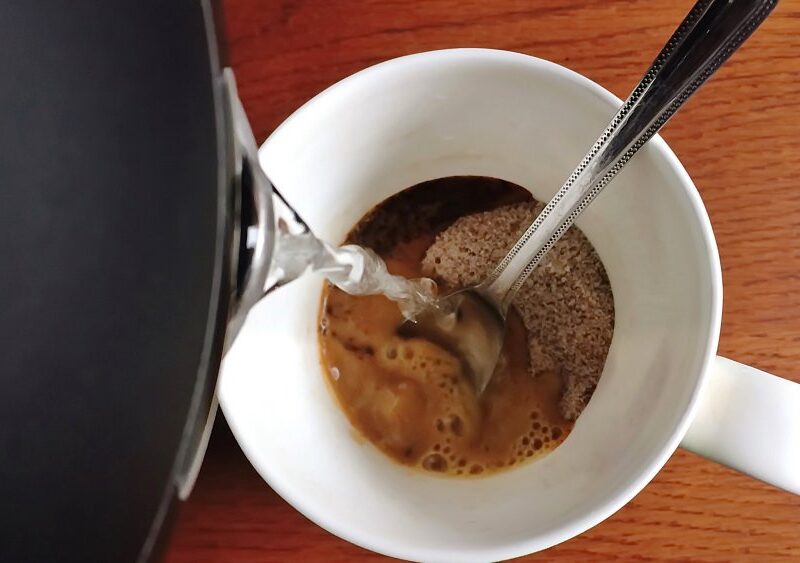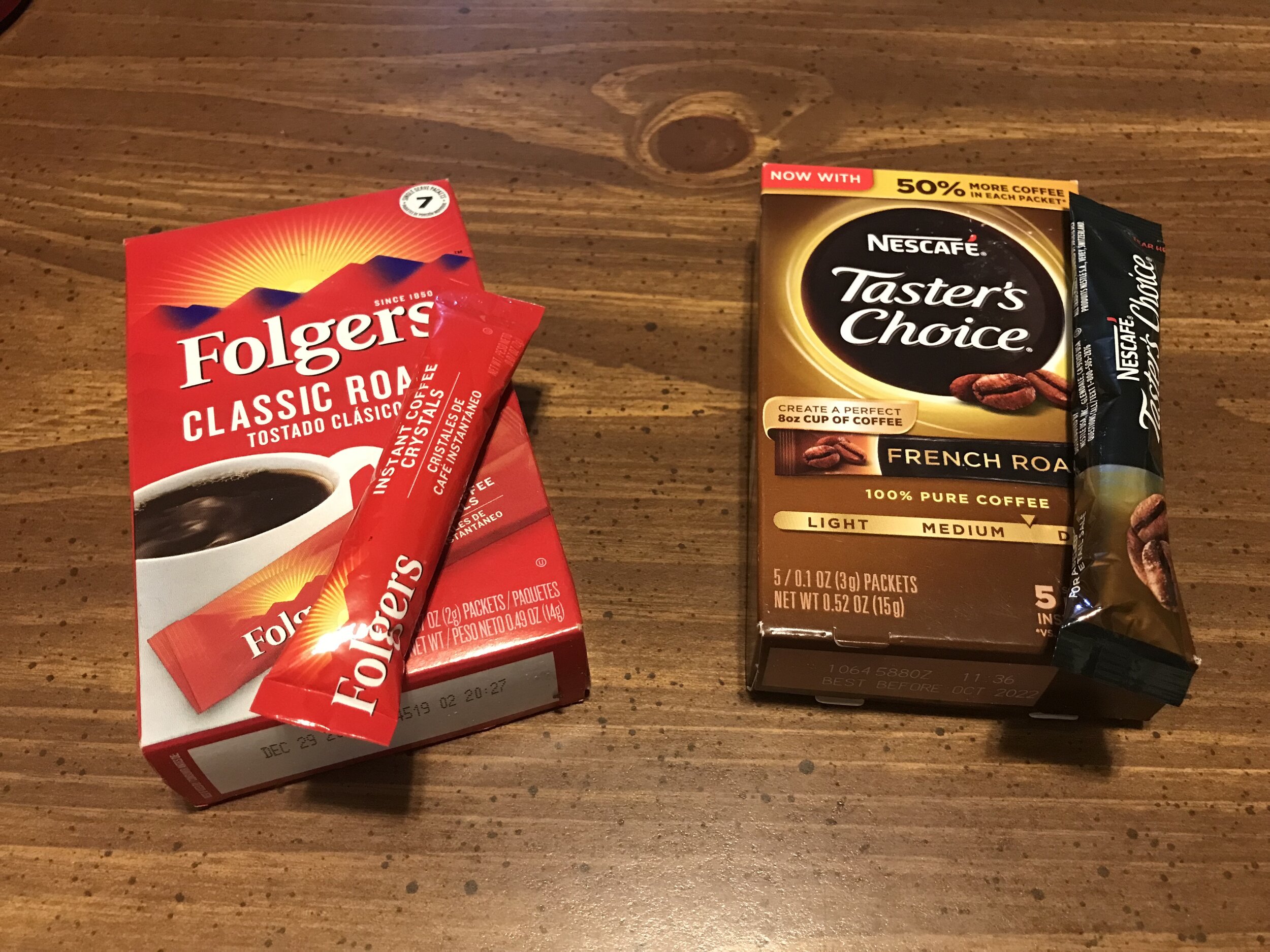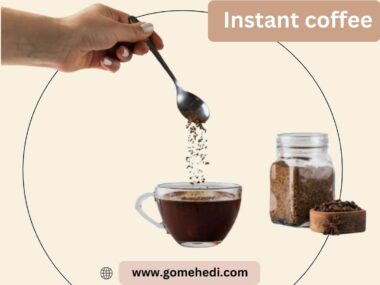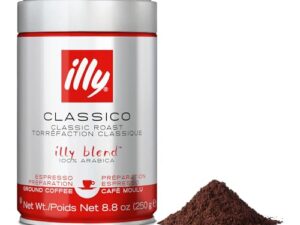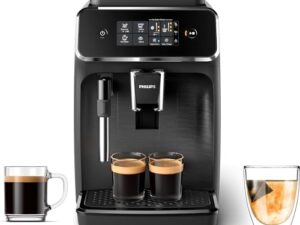Instant coffee is convenient. Real coffee offers a richer experience.
But how do they truly compare? Instant coffee may not have the same depth of flavor or aroma as freshly brewed coffee. Its quick preparation appeals to busy schedules and those who need a fast caffeine fix. Real coffee, on the other hand, brings a ritual of preparation and a variety of tastes.
Many coffee lovers appreciate the complexity and freshness found in ground beans. Yet, instant coffee has evolved, with some brands offering improved taste profiles. Understanding the differences helps you choose what fits your lifestyle and taste. So, let’s dive into this comparison to explore which coffee option might be best for you.
Taste Comparison
Is instant coffee as delightful as a freshly brewed cup? Many coffee lovers ponder this question. The debate isn’t just about convenience versus tradition; it’s about taste. Coffee enthusiasts often argue that the flavor is the heart of the experience. Let’s dive into the taste comparison between instant coffee and real coffee. Explore how these two varieties differ in flavor profiles and aroma.
Flavor Profiles
Instant coffee and real coffee present distinct flavor profiles. Each offers unique experiences. Here’s a closer look:
-
Instant Coffee: Often, it’s milder with a smooth finish. Some say it lacks depth. The process removes some oils and compounds that create rich flavors.
-
Real Coffee: Offers a broader range of flavors. You might taste notes of chocolate, fruit, or nuts. The brewing process helps preserve the oils and compounds.
Flavor also varies by type:
|
Type |
Instant Coffee |
Real Coffee |
|---|---|---|
|
Bold |
Less intense |
Rich and strong |
|
Mild |
Gentle and smooth |
Balanced and nuanced |
Both types can satisfy different taste preferences. Some prefer instant for its simplicity. Others enjoy the complexity of real coffee.
Aroma Differences
Aroma plays a significant role in coffee enjoyment. It can enhance or diminish the overall experience.
Instant Coffee: The aroma is often lighter. The manufacturing process affects the scent. It might not be as enticing or fresh.
Real Coffee: Known for its robust aroma. Freshly ground beans release a rich, inviting scent. It can fill a room and awaken the senses.
Aroma differences can be summarized:
-
Complexity: Real coffee often has a layered scent. Instant coffee may smell flat.
-
Intensity: Freshly brewed coffee tends to be more aromatic. Instant coffee might lack this depth.
Choosing between instant and real coffee can hinge on aroma preference. For some, the smell is as vital as the taste.
:max_bytes(150000):strip_icc()/Is-Instant-Coffee-Bad-for-You-or-Is-It-As-Healthy-As-Brewed-Heres-What-Dietitians-and-Doctors-Say-8014eea5e3d24ebbb9b6f08d91c86822.jpg)
Credit: www.eatingwell.com
Nutritional Value
Instant coffee and real coffee both have their unique appeal. While instant coffee is quick and convenient, real coffee often boasts a richer taste. But how do they compare in terms of nutritional value? Understanding the nutritional aspects can help you make an informed choice. Let’s delve into the caffeine content and antioxidant levels of both types of coffee.
Caffeine Content
One of the main reasons people drink coffee is for its caffeine. Caffeine gives you that boost of energy. But how does instant coffee stack up against real coffee in this regard?
Instant coffee typically contains less caffeine than brewed coffee. Here’s a closer look:
|
Type of Coffee |
Caffeine Content (per 8 oz cup) |
|---|---|
|
Instant Coffee |
60-80 mg |
|
Brewed Coffee |
95-165 mg |
-
Instant coffee has less caffeine, which may be better for those sensitive to caffeine.
-
Brewed coffee offers a stronger caffeine boost, ideal for those needing more energy.
Instant coffee is a lighter option for caffeine intake. While real coffee offers more punch, it might not be suitable for everyone. Consider your caffeine needs when choosing.
Antioxidant Levels
Antioxidants are vital for your health. They protect your body from damage by free radicals. Coffee is a significant source of antioxidants for many people. But how does instant coffee compare to real coffee?
Both instant and real coffee contain antioxidants. Here’s a breakdown:
-
Chlorogenic acids: Both types have these, which help in reducing inflammation and regulating blood sugar.
-
Polyphenols: These compounds are present in both, aiding in heart health and reducing the risk of certain diseases.
Surprisingly, instant coffee can have slightly higher antioxidant levels. This is due to the way it’s processed. The concentration of solids in instant coffee may contribute to this.
-
Both types offer health benefits from antioxidants.
-
Instant coffee can be a convenient source of antioxidants.
-
Real coffee provides a more complex flavor with its antioxidants.
Choosing between instant and real coffee depends on what you value more—convenience or flavor. Both options contribute positively to your antioxidant intake.
Preparation Methods
Preparing coffee can be a simple delight or a meticulous ritual. Instant coffee offers convenience, while real coffee provides a richer experience. Understanding the preparation methods can help you decide which suits your lifestyle and taste buds. Both have unique processes and flavors, catering to diverse preferences. Let’s explore how each type is made and what makes them distinct.
Brewing Instant Coffee
Instant coffee is known for its quick and easy preparation. It’s perfect for busy mornings or when you’re on the go. The process involves dissolving dried coffee granules in hot water. This method is straightforward and doesn’t require special equipment.
-
Boil water: Use a kettle or microwave.
-
Measure coffee: Usually one to two teaspoons per cup.
-
Add water: Pour hot water over the granules.
-
Stir: Mix until fully dissolved.
Instant coffee is convenient but lacks the complexity of real coffee. It often contains added flavors or sweeteners. Despite being quick, it delivers a simpler taste profile.
|
Pros |
Cons |
|---|---|
|
Fast preparation |
Less flavor depth |
|
No equipment needed |
May contain additives |
This option suits those who prioritize speed and simplicity over richness and aroma.
Making Real Coffee
Real coffee involves a more involved brewing process. It allows for customization and experimentation with flavors. Common methods include using a drip coffee maker, French press, or espresso machine.
-
Choose beans: Select whole beans for freshness.
-
Grind beans: Adjust coarseness based on your method.
-
Measure water: Use filtered water for best taste.
-
Brew: Follow specific steps for your chosen method.
Real coffee offers a full-bodied flavor. Each brewing method provides a unique taste experience. It’s possible to control strength, aroma, and richness. This process requires time and sometimes specialized equipment.
Real coffee enthusiasts enjoy experimenting with different beans and brewing techniques. They find pleasure in customizing their brew to achieve the perfect cup.
|
Pros |
Cons |
|---|---|
|
Rich flavor |
Time-consuming |
|
Customizable |
Requires equipment |
For those who appreciate depth and variety in taste, real coffee provides an engaging experience.
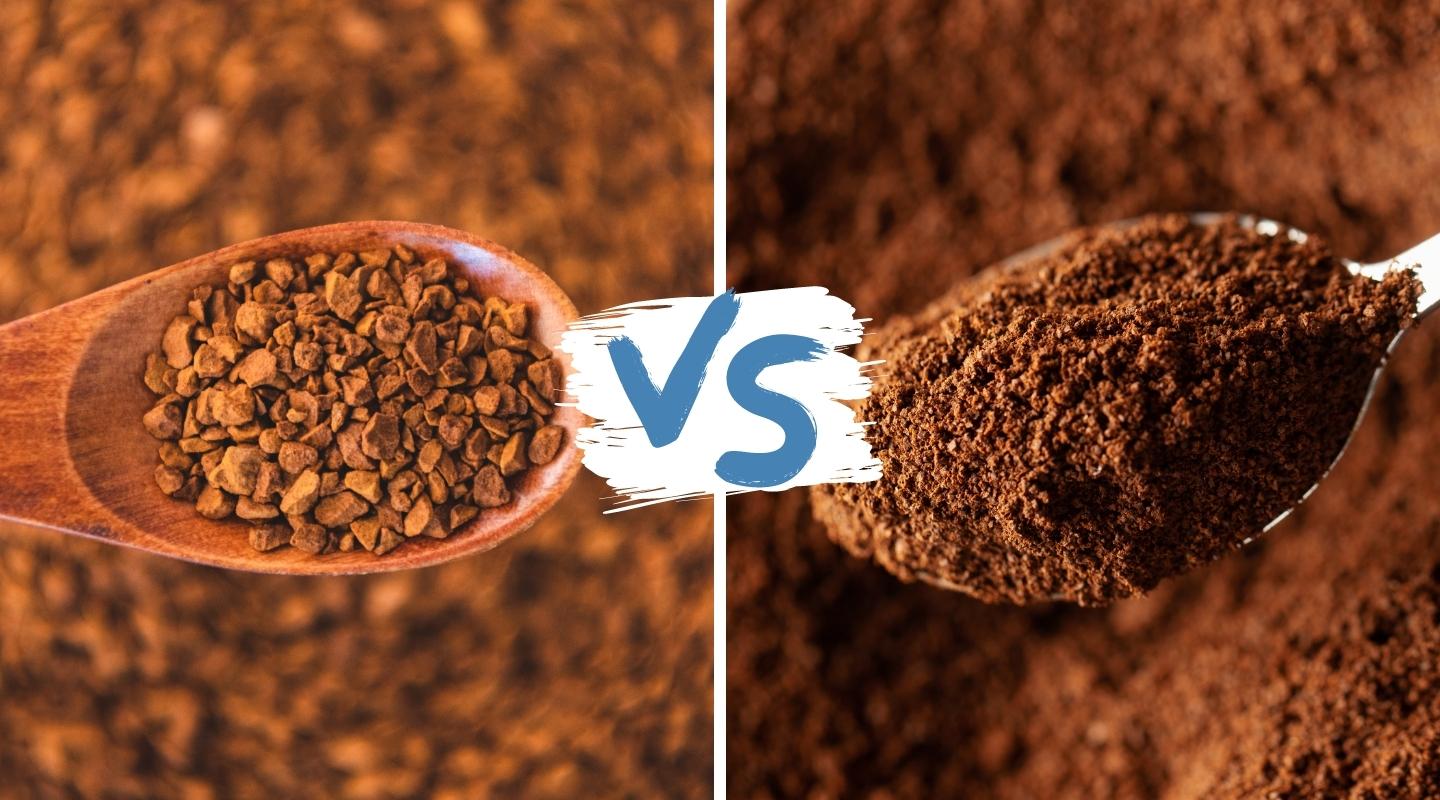
Credit: www.wakacoffee.com
Convenience Factor
Instant coffee is often debated for its taste and aroma compared to real coffee. Yet, there’s no denying the convenience it offers. In today’s fast-paced world, the convenience factor plays a significant role in how many choose their coffee. Instant coffee allows individuals to enjoy a quick caffeine fix without the hassle of brewing. This section explores the advantages of instant coffee in terms of time efficiency and portability.
Time Efficiency
Time is precious, and instant coffee understands that. Unlike traditional coffee, instant coffee requires no grinding, brewing, or waiting.
-
Quick Preparation: Simply add hot water to a teaspoon of instant coffee, stir, and enjoy. The whole process takes less than a minute.
-
No Equipment Needed: Forget about coffee makers, filters, or grinders. Instant coffee eliminates the need for any extra tools.
-
Easy Clean-Up: With no grounds or filters to dispose of, cleaning up is a breeze.
Consider the time-saving benefits in a typical morning routine. Traditional coffee might take at least five minutes to prepare. Instant coffee, on the other hand, can be ready in under a minute.
|
Task |
Instant Coffee |
Traditional Coffee |
|---|---|---|
|
Preparation |
1 min |
5 mins |
|
Clean-Up |
30 secs |
2 mins |
In busy mornings, every second counts. Instant coffee delivers a caffeine boost quickly, freeing up time for other activities.
Portability
Traveling, camping, or just going to work? Instant coffee shines with its portability. No bulky equipment is needed, making it ideal for those on the move.
-
Compact Packaging: Instant coffee comes in small sachets or jars, easily fitting into bags or pockets.
-
Anywhere, Anytime: Whether you’re on a plane or in a remote location, all you need is hot water.
-
Lightweight: Perfect for those who prefer traveling light. No need to carry heavy coffee machines.
Imagine a hiking trip. Traditional coffee requires a portable brewer, filters, and coffee grounds. Instant coffee only needs a sachet and hot water. This simplicity makes it a favorite among travelers.
Here’s a quick comparison:
|
Feature |
Instant Coffee |
Traditional Coffee |
|---|---|---|
|
Packaging |
Compact |
Bulky |
|
Weight |
Light |
Heavy |
|
Preparation Location |
Anywhere |
Limited |
Instant coffee offers convenience for those who value portability. It allows you to enjoy a cup wherever life takes you.
Cost Analysis
Is instant coffee as good as real coffee? This debate has been brewing for years. Many coffee lovers ponder not just the taste but also the cost. A detailed cost analysis can help coffee enthusiasts make informed choices. By comparing the price points and long-term savings, one can see which option suits their budget better.
Price Points
When evaluating the price of coffee, instant coffee generally stands out for its affordability. Let’s break it down:
-
Instant Coffee: Typically priced between $5 to $10 for a 100g jar. This can yield up to 50 cups.
-
Real Coffee: Ground or whole bean coffee ranges from $10 to $20 for a 500g bag. This can brew around 25 to 40 cups, depending on strength.
Here’s a simple table to illustrate the cost per cup:
|
Type |
Price per Cup |
|---|---|
|
Instant Coffee |
$0.10 – $0.20 |
|
Real Coffee |
$0.25 – $0.40 |
Instant coffee offers a lower price per cup. This makes it a budget-friendly choice for many. On the other hand, real coffee provides a richer experience, but at a higher cost.
Long-term Savings
Long-term savings play a crucial role in deciding between instant coffee and real coffee. Consistent coffee drinkers might find noticeable differences over time.
Consider this scenario:
-
For an average consumption of 2 cups per day:
-
Instant Coffee: Costs around $0.20 to $0.40 daily, leading to $73 to $146 annually.
-
Real Coffee: Costs around $0.50 to $0.80 daily, amounting to $182 to $292 annually.
-
The yearly savings with instant coffee can be significant. Approximately $109 to $219 can be saved each year.
Over five years, choosing instant coffee could potentially save up to $1,095. For families or households with multiple coffee drinkers, these savings multiply.
Instant coffee’s affordability makes it appealing for those watching their spending. Real coffee, though pricier, might be worth it for those who prioritize flavor over cost.
Credit: www.thebrewadventures.com
Health Impacts
Is instant coffee as good as real coffee? This question often sparks debate among coffee enthusiasts. Health impacts play a crucial role in this discussion. Instant coffee and fresh coffee have distinct differences in their composition. These differences can influence their health benefits and drawbacks. Understanding these can help you make informed choices about your coffee consumption.
Additives In Instant Coffee
Instant coffee is a convenient option for many. Its quick preparation suits busy lifestyles. Yet, this convenience may come with added ingredients that aren’t always beneficial. Instant coffee often contains additives to enhance flavor and aroma. These can include:
-
Preservatives: Used to prolong shelf life. They may affect taste and freshness.
-
Flavor enhancers: Added to mimic the taste of freshly brewed coffee.
-
Sugar and sweeteners: Sometimes included to appeal to a sweeter palate.
These additives can have health impacts. Preservatives may contribute to unwanted health effects with long-term consumption. Excessive sugar can lead to weight gain and other health issues. Choosing instant coffee with fewer additives is a healthier option. Check labels for ingredient lists before purchasing. Being aware of what’s in your cup can help you make better choices.
Benefits Of Fresh Coffee
Fresh coffee offers a more natural experience. It is often considered healthier due to its minimal processing. Freshly brewed coffee contains high levels of antioxidants. These antioxidants are beneficial for fighting free radicals in the body. Here are some potential health benefits of fresh coffee:
-
Rich in Antioxidants: Helps reduce inflammation and supports overall health.
-
Enhanced Flavor: Offers a richer and more complex taste profile.
-
Lower Risk of Additives: Typically free from preservatives and artificial ingredients.
Fresh coffee may also provide mental benefits. Caffeine found in fresh coffee can improve focus and alertness. It may also lower the risk of certain diseases. Enjoying fresh coffee can be a rewarding experience. It provides a healthier alternative with fewer additives. Consider investing in quality beans and brewing methods. This can enhance your coffee experience and support better health.
Environmental Considerations
Is instant coffee as good as real coffee? This question often sparks debate among coffee lovers. While taste and aroma are vital, environmental considerations also play a crucial role. Coffee production and packaging impact the earth, and understanding these factors can guide eco-friendly choices.
Sustainability Of Coffee Production
Both instant and real coffee depend on coffee beans, which require specific conditions to grow. These include adequate rainfall, fertile soil, and consistent temperatures. Yet, not all coffee farms maintain sustainable practices. Unchecked, this can lead to deforestation and soil erosion.
Here’s a breakdown of sustainable practices in coffee production:
-
Shade-grown coffee: Uses natural forest cover, preserving ecosystems.
-
Organic farming: Avoids chemicals and pesticides, promoting soil health.
-
Fair Trade Certification: Ensures fair wages and conditions for farmers.
Instant coffee often comes from lower-grade beans. These require less intensive farming, which can be more sustainable. Yet, the energy-intensive drying process for instant coffee may offset these benefits.
In contrast, real coffee often involves more manual labor and higher quality beans. This can lead to better wages for workers but may demand more resources.
Packaging Waste
Packaging plays a huge role in coffee’s environmental footprint. Real coffee typically comes in larger packages. Bags or tins that last longer and create less waste.
Instant coffee, though convenient, often comes in single-use packets. These small packages can add up, contributing significantly to landfill waste.
Consider these packaging materials:
|
Type |
Common Material |
Environmental Impact |
|---|---|---|
|
Instant Coffee Packets |
Plastic/Aluminum |
High waste, not easily recyclable |
|
Real Coffee Bags |
Paper/Foil |
More recyclable, less waste |
Recycling rates for coffee packaging vary widely. Opting for brands with recyclable materials can reduce waste. Bulk buying real coffee reduces packaging needs, offering an eco-friendly option.
Consumer Preferences
Instant coffee and real coffee have long been a topic of debate among coffee enthusiasts and casual drinkers alike. Consumer preferences play a crucial role in this ongoing discussion. Some prefer the quick and easy preparation of instant coffee, while others relish the rich aroma and robust flavor of freshly brewed coffee. Understanding why consumers choose one over the other can shed light on evolving coffee consumption habits.
Trends In Coffee Consumption
The landscape of coffee consumption is shifting. Convenience and speed drive many people towards instant coffee. Busy lifestyles demand quick solutions, and instant coffee delivers just that. Flavor profiles also influence preferences. While instant coffee offers a milder taste, real coffee provides depth and complexity. Health-conscious choices are another trend. Fresh coffee contains antioxidants, appealing to health-aware consumers.
According to recent surveys:
-
70% of people opt for instant coffee for its convenience.
-
60% of real coffee drinkers prioritize taste.
-
50% of coffee consumers consider health benefits.
The popularity of coffee shops also affects consumption habits. Many enjoy the experience of visiting a café, which often serves freshly brewed coffee. Social media trends showcase the rise of artisanal coffee, influencing consumer choices. People are drawn to visually appealing coffee styles, contributing to the preference for real coffee.
Demographic Choices
Age and lifestyle significantly impact coffee preferences. Young adults, often pressed for time, favor instant coffee for its ease. Meanwhile, older generations who have more leisure time might prefer the ritual of brewing coffee. Income levels also play a part. Instant coffee is generally more affordable, making it a popular choice among budget-conscious consumers.
Here’s a table illustrating demographic preferences:
|
Demographic |
Preference |
|---|---|
|
Young Adults |
Instant Coffee |
|
Middle-Aged Adults |
Real Coffee |
|
Retirees |
Real Coffee |
|
Low-Income |
Instant Coffee |
Cultural influences also shape coffee preferences. In countries with a strong coffee tradition, real coffee dominates. In regions where coffee is seen as a quick fix, instant coffee is preferred. Taste familiarity matters too. People tend to choose coffee that aligns with their cultural palate. These demographic factors offer insight into consumer choices between instant and real coffee.
Frequently Asked Questions
Is Instant Coffee Healthier Than Regular Coffee?
Instant coffee contains less caffeine than regular coffee, making it less likely to cause jitters. It also provides antioxidants similar to brewed coffee. Both types have health benefits, but instant coffee is often processed with additives. Choose based on preference and dietary needs, as neither is inherently healthier.
Which Is The Healthiest Coffee To Drink?
Black coffee is the healthiest option. It contains no added sugars or fats, maximizing antioxidants and nutrients. Choose organic coffee to avoid pesticides. Drink in moderation to enjoy health benefits like improved metabolism and reduced risk of certain diseases. Always consult with a healthcare professional for personalized advice.
Is Instant Coffee As Good As Fresh Coffee?
Instant coffee offers convenience but lacks the rich flavor of fresh coffee. Fresh coffee provides superior aroma and taste. Instant coffee is quicker and easier to make. Both have caffeine, but fresh coffee usually has more. Preferences vary; some enjoy instant, while others prefer the depth of fresh coffee.
Which Coffee Method Is Healthiest?
Brewing coffee with a paper filter is considered the healthiest method. The filter removes cholesterol-raising compounds. Choose organic coffee beans for fewer pesticides. Avoid adding sugar or cream for a healthier drink. Consuming coffee in moderation supports health benefits like antioxidants and improved metabolism.
Conclusion
Instant coffee has its perks. It’s quick, convenient, and cost-effective. Real coffee offers richer taste and aroma. Many people enjoy the experience of brewing. Instant coffee lacks depth but serves busy lives well. Choose based on your needs and preferences.
Both options have loyal fans. Taste varies from person to person. Experimenting with both can be fun. Explore different brands and blends. Each type has unique qualities. Find what suits your lifestyle best. Enjoy your coffee journey, whether instant or brewed.
Coffee moments can be special, no matter the choice.
